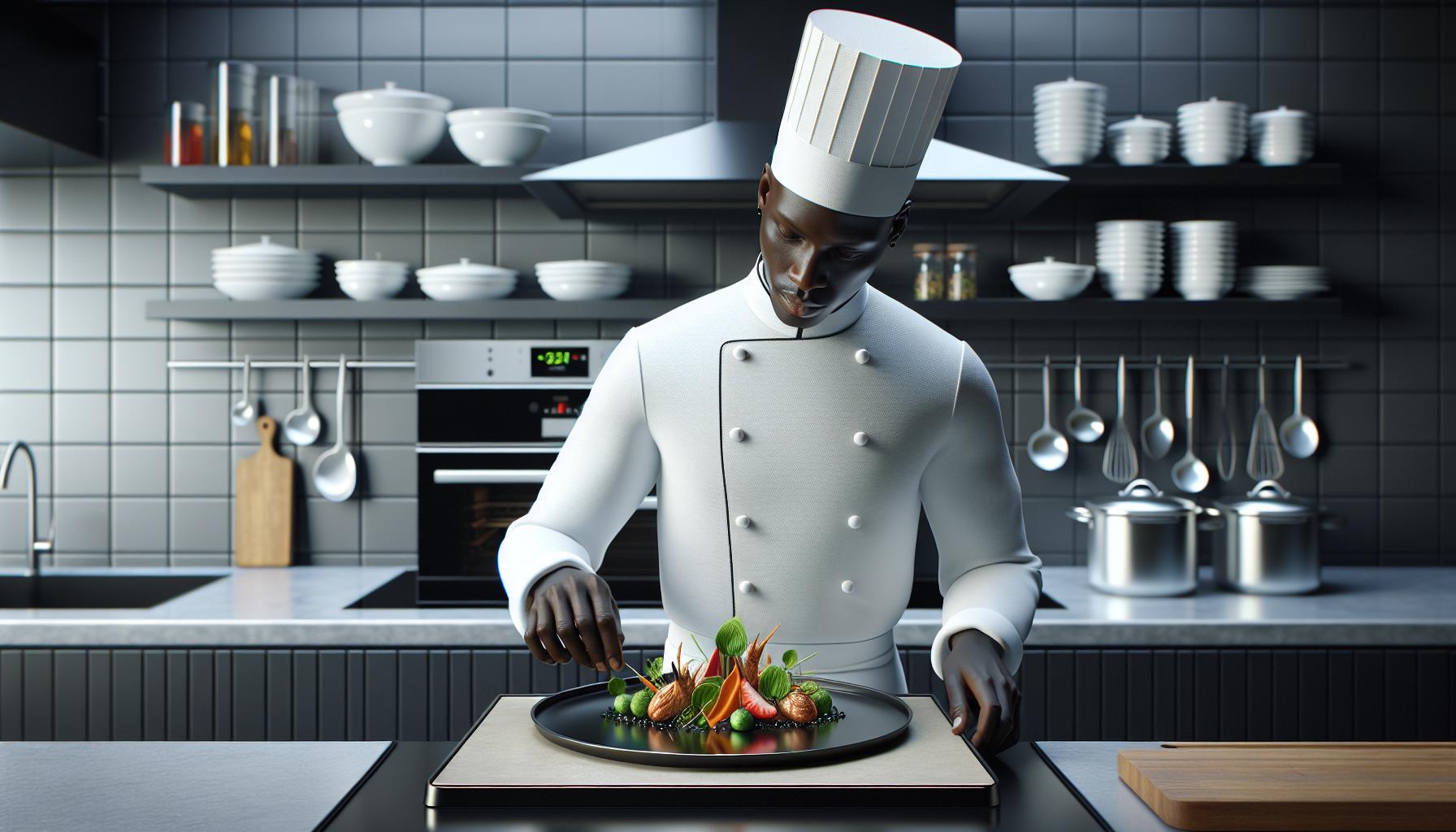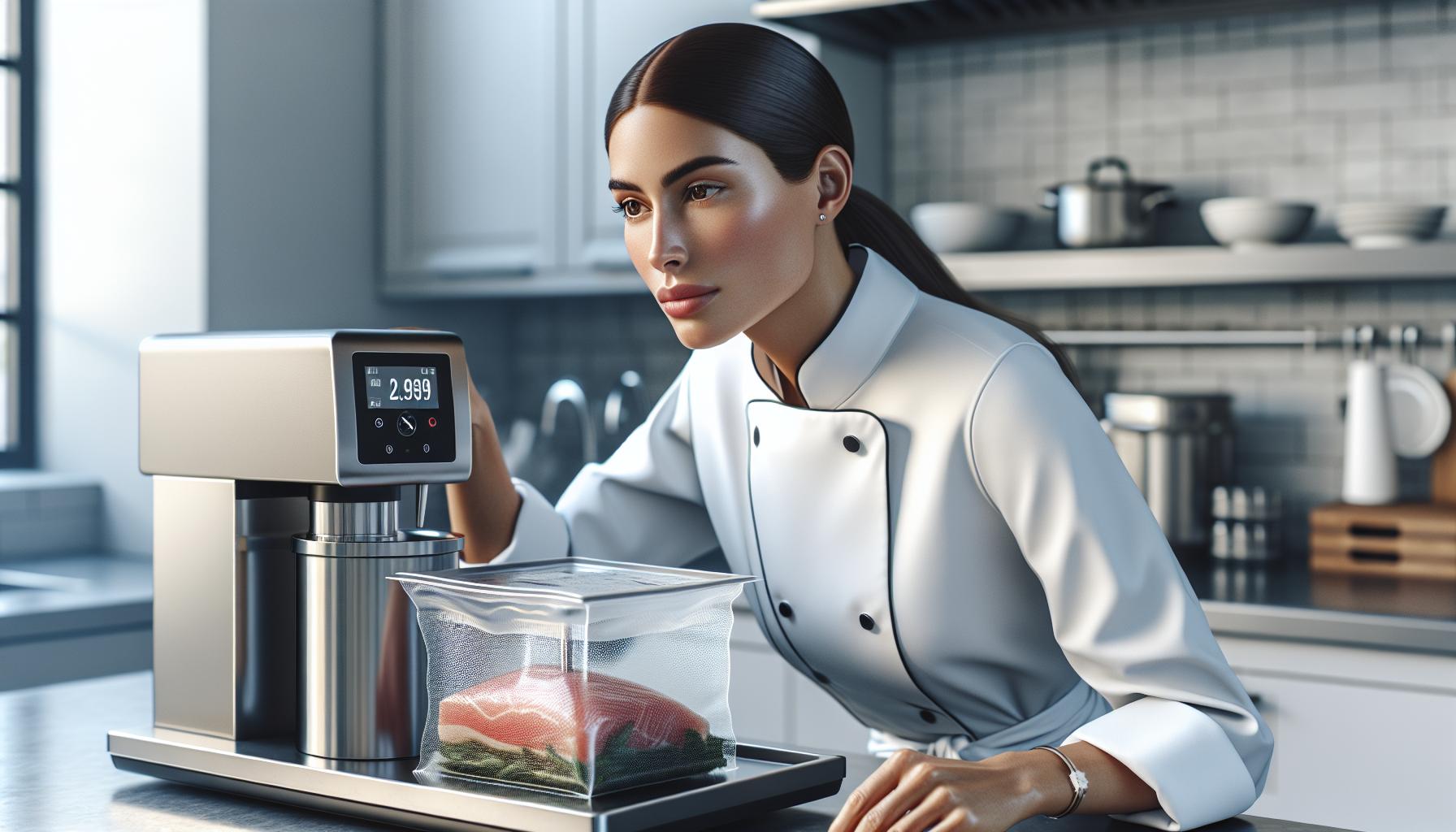
Fine dining isn’t just about fancy plates and expensive ingredients – it’s an art form that transforms ordinary meals into extraordinary culinary experiences. From the precise knife skills of a seasoned chef to the delicate balance of flavors that dance on your tongue these techniques elevate home cooking to restaurant-worthy status.
Professional chefs have spent decades perfecting these methods and now they’re sharing their secrets with home cooks who want to bring Michelin-star magic to their own kitchens. Whether it’s mastering the perfect sear practicing proper plating or understanding the science behind emulsification these techniques can turn anyone into a kitchen virtuoso. The best part? You don’t need a culinary degree or expensive equipment to get started – just patience passion and the right guidance.
Fine Dining Cooking Techniques
Professional kitchens rely on specific equipment to create sophisticated dishes with precision. The right tools enable chefs to execute complex techniques consistently while maintaining quality standards.
Professional-Grade Knives and Tools
A chef’s knife collection forms the foundation of fine dining preparation. The essential set includes:
- 8-inch chef’s knife for general cutting tasks
- Paring knife for intricate vegetable work
- Serrated bread knife for crusty loaves
- Boning knife for meat preparation
- Kitchen shears for precise trimming
Supporting tools complement these knives:
- Microplane graters for citrus zest garnishes
- Mandoline for uniform vegetable slices
- Digital scale for exact measurements
- Metal spatulas in various sizes
- Stainless steel mixing bowls
Temperature Control Devices
Temperature precision distinguishes fine dining preparation from casual cooking. Key equipment includes:
- Digital probe thermometers accurate to 0.1°F
- Infrared thermometers for surface temperatures
- Immersion circulators for sous vide cooking
- Temperature-controlled induction burners
- Blast chillers for rapid cooling
- Refrigeration temperatures
- Oil temperatures for deep frying
- Food holding temperatures
- Water bath temperatures
- Oven cavity temperatures
| Device Type | Temperature Range | Typical Use |
|---|---|---|
| Probe Thermometer | -58°F to 572°F | Meat doneness |
| Infrared Scanner | -58°F to 1022°F | Surface temp |
| Immersion Circulator | 32°F to 203°F | Sous vide |
Foundational French Cooking Techniques

French culinary techniques form the cornerstone of fine dining worldwide. These methods create exceptional flavors through precise execution refined over centuries.
Classic Mother Sauces
The five mother sauces establish the foundation for countless French derivatives. Béchamel combines milk with a roux base to create a creamy white sauce perfect for gratins. Velouté transforms light stock with blonde roux into a versatile sauce for poultry dishes. Espagnole uses brown roux with beef stock to produce rich meat-based sauces. Hollandaise emulsifies clarified butter with egg yolks for a luxurious breakfast staple. Tomato sauce rounds out the collection with fresh tomatoes reduced with aromatics. Each sauce requires specific temperature control techniques:
| Mother Sauce | Base | Ideal Temperature |
|---|---|---|
| Béchamel | Milk | 165°F (74°C) |
| Velouté | Light Stock | 180°F (82°C) |
| Espagnole | Brown Stock | 195°F (91°C) |
| Hollandaise | Butter/Eggs | 140°F (60°C) |
| Tomato | Tomatoes | 185°F (85°C) |
| Cut Type | Dimensions |
|---|---|
| Brunoise | 1/8″ cube |
| Batonnet | 1/4″ x 1/4″ x 2-3″ |
| Julienne | 1/8″ x 1/8″ x 2″ |
| Dice | 1/4″ – 3/4″ cube |
Modern Plating Methods

Contemporary plating transforms fine dining dishes into visual masterpieces through strategic food placement and artistic presentation. Modern chefs utilize specific spatial arrangements and innovative garnishing methods to create memorable dining experiences.
Negative Space and Balance
Negative space creates visual impact through intentional empty areas on the plate. Professional chefs arrange food components in asymmetrical patterns, placing larger elements off-center to draw attention to specific ingredients. The rule of thirds guides optimal placement, with proteins occupying one-third of the plate space while complementary elements fill the remaining areas. Strategic spacing between components prevents overcrowding and allows each element to stand out:
- Focal points appear at intersecting grid lines
- Color contrasts enhance depth perception
- Textural elements add dimensional layers
- Height variations create visual movement
- White space frames the composition
Garnishing Techniques
Modern garnishing elevates dishes through precise placement of edible decorative elements. Chefs incorporate micro-herbs, edible flowers, oils, purees, crumbles, and powders to add color, texture, and flavor dimensions:
- Micro-greens provide delicate height accents
- Herb oils create artistic swooshes and dots
- Vegetable purees form smooth color blocks
- Dehydrated ingredients add textural elements
- Edible flowers introduce seasonal pops of color
- Flavored foams create light architectural elements
- Sauce drops follow geometric patterns
Each garnish serves both aesthetic and flavor purposes, complementing the main components while maintaining visual harmony across the plate.
Temperature and Timing Control

Temperature control establishes the foundation for executing fine dining techniques with precision. Professional chefs monitor cooking temperatures meticulously to achieve optimal textures, flavors, and food safety standards.
Precise Cooking Methods
Different proteins require specific temperature ranges for optimal results. Fish fillets cook perfectly at 130-135°F (54-57°C) for delicate, flaky textures. Beef temperatures vary by desired doneness:
| Doneness Level | Internal Temperature |
|---|---|
| Rare | 125°F (52°C) |
| Medium-Rare | 135°F (57°C) |
| Medium | 145°F (63°C) |
| Medium-Well | 150°F (66°C) |
| Well-Done | 160°F (71°C) |
Sous vide cooking maintains precise temperatures through water circulation, ensuring consistent results. Digital probe thermometers monitor internal temperatures while cooking. Infrared thermometers check surface temperatures for proper searing temperatures of 400-450°F (204-232°C).
Resting and Holding Times
Proper resting periods allow proteins to retain moisture after cooking. Large cuts of meat rest for 10-15 minutes under loose foil tents. Small cuts require 5-7 minutes. The resting temperature chart shows optimal holding times:
| Protein Type | Resting Time | Holding Temperature |
|---|---|---|
| Steaks | 5-7 minutes | 135°F (57°C) |
| Roasts | 15-20 minutes | 140°F (60°C) |
| Poultry | 8-10 minutes | 145°F (63°C) |
| Fish | 3-5 minutes | 130°F (54°C) |
Temperature-controlled warming drawers maintain food at safe serving temperatures without overcooking. Hot holding equipment keeps sauces stable at 140-160°F (60-71°C).
Advanced Food Preparation Methods
Professional chefs employ sophisticated techniques to create exceptional dishes that elevate dining experiences beyond traditional cooking methods. These advanced preparations combine scientific principles with culinary artistry to achieve precise results.
Sous Vide Cooking
Sous vide cooking involves vacuum-sealing ingredients in plastic bags and immersing them in temperature-controlled water baths. This method maintains consistent temperatures throughout the cooking process, resulting in perfectly cooked proteins with optimal moisture retention. An immersion circulator heats water to exact temperatures: 131°F for medium-rare beef, 140°F for fish or 165°F for poultry. The extended cooking times allow flavors to develop fully while preventing overcooking, creating tender results that traditional methods rarely achieve. Professional kitchens use sous vide to prepare components in advance, ensuring consistency during service periods.
Molecular Gastronomy
Molecular gastronomy applies scientific principles to transform ingredients into innovative forms through chemical reactions. Chefs use specialized ingredients like sodium alginate calcium lactate to create spherifications: liquid-filled spheres that burst with flavor. Liquid nitrogen at -320°F flash-freezes ingredients to create unique textures contrasts. Additional techniques include transforming liquids into foams using lecithin emulsifiers creating powders through maltodextrin binding of fats creating gels with agar agar. These methods produce dishes that challenge traditional dining expectations by altering familiar ingredients into unexpected forms textures temperatures.
Food Presentation and Styling
Fine dining presentation transforms plates into artistic compositions through deliberate placement, color harmony and architectural elements. Expert plating techniques enhance both visual appeal and dining experience through strategic design principles.
Color Theory and Composition
Professional chefs apply color wheel principles to create visually striking plates. Complementary colors like orange carrots paired with purple beets create dynamic contrast. Analogous color schemes using greens from various herbs produce harmonious presentations. The rule of thirds guides optimal food placement by dividing plates into nine equal sections. White space remains essential, with 30% of the plate left empty to frame the composition. Strategic color blocking organizes components while maintaining visual flow across proteins, vegetables and sauces.
Creating Height and Dimension
Vertical plating adds drama through carefully stacked components that draw the eye upward. Proteins serve as stable foundations for building layered presentations. Crisp vegetables create architectural supports while adding textural contrast. Microgreens crown elevated compositions to add delicate height. Strategic sauce placement creates depth through pools, dots and trailing lines. Negative space between vertical elements prevents visual crowding while maintaining proper portion spacing. Garnishes like tuiles and crisps provide structural elements that enhance dimensional impact.
Menu Planning and Development
Fine dining menus require careful planning that balances creativity with practical execution. Successful menu development combines seasonal ingredients with strategic course progression to create memorable dining experiences.
Seasonal Ingredient Selection
Seasonal ingredients form the foundation of fine dining menus. Fresh produce at peak ripeness delivers superior flavor profiles while reducing food costs. Local seasonal ingredients include spring asparagus, summer heirloom tomatoes, autumn squashes, and winter root vegetables. Professional chefs build relationships with local farmers to secure premium ingredients before they reach markets. Menu planning starts 3-4 months ahead of each season to allow time for recipe testing and refinement. Specialty ingredients like truffles, morels, and wild-caught seafood appear on menus only during their peak seasons to maintain quality standards. Temperature-controlled storage areas keep delicate seasonal items at optimal conditions: leafy greens at 34-38°F, fruits at 38-42°F, root vegetables at 50-55°F.
Course Progression
Fine dining menus follow a strategic progression that builds flavor intensity throughout the meal. Light appetizers like citrus-cured crudo or chilled seafood start the experience. Middle courses feature medium-intensity dishes such as house-made pasta or seasonal vegetable compositions. Main courses present bold flavors through perfectly cooked proteins paired with concentrated sauces. Palate cleansers appear between rich courses using ingredients like citrus sorbets or herb granitas. Dessert courses conclude with balanced sweetness through composed plates featuring 3-4 complementary components. Each course connects through intentional flavor bridges while maintaining distinct identities. Portion sizes decrease from 6-8 ounces for mains to 2-3 ounces for desserts.
Fine Dining Techniques
Fine dining techniques represent the pinnacle of culinary artistry blending precision timing temperature control and artistic presentation. Mastering these methods opens up endless possibilities for creating exceptional dining experiences at home. While professional chefs spend years perfecting these skills home cooks can achieve impressive results by focusing on fundamental techniques and gradually building their expertise.
The journey to mastering fine dining cooking isn’t just about following recipes – it’s about understanding the principles behind each technique. With dedication practice and the right tools anyone can elevate their cooking to restaurant-quality standards. These skills will transform ordinary meals into memorable culinary experiences that rival the finest restaurants.


